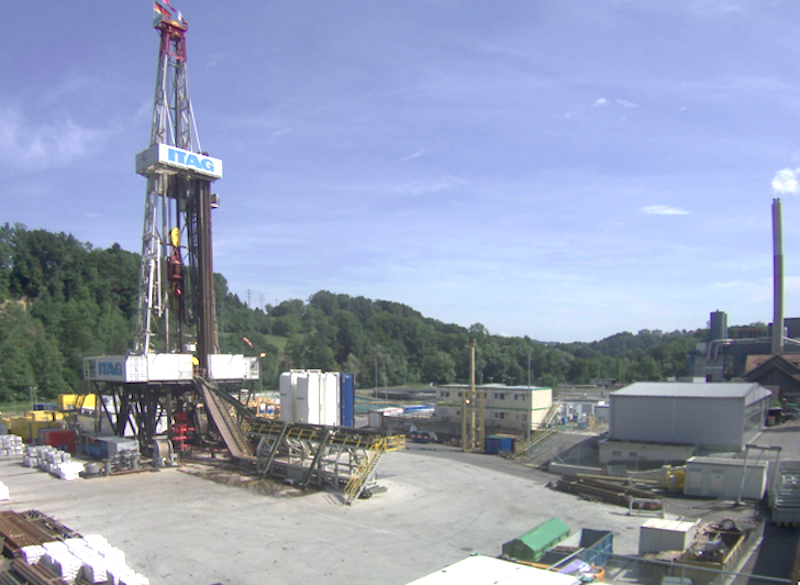A new start? Geothermal energy waking up in Switzerland
With the history of a failed project in Switzerland, it now seems work on geothermal energy is awakening in Switzerland anew with a new research laboratory underground by ETH Zurich and some heating projects.
A recent article published in Switzerland looks at how geothermal energy as a source for power generation once was a big hope for the country’s energy transition. After a pilot project in the city of St. Gallen came to a standstill, things became quite. But now ETH Zurich has opened a new test laboratory and in the Canton of Romandie new projects are being planned.
It was a deep shock in July 2013, not just in St. Gallen, when the CHF 160m project shook the earth Just a year later, the flagship project had to be discontinued because further vibrations could not be ruled out and the productivity of the subsoil was inadequate. Five years ago Stefan Wiemer, Director of the Swiss Seismological Service (SED) at ETH Zurich, explained the processes.
“That was a setback for geothermal energy,” says the seismologist today. And in Basel, a geothermal project failed because of man-made earthquakes in front of St.Gallen.
“There have not been any big projects in Switzerland since then”.
Geothermal energy production is part of the national energy strategy 2050. After the accident in Fukushima, great hopes were set for tapping into the interior of the earth in order to be able to replace the future lack of electricity from the nuclear power plants.
A new start in the Romandie
After the failure of the large-scale projects, the country has become silent about this type of energy production. But it is not dead. There is still a lot going on worldwide, Wiemer formulates carefully. However, further setbacks have been added. Geothermal projects have recently shook the earth in the U.S. and South Korea. In South Korea, even people got injured, says Wiemer. The region around Munich (in Germany) is a role model. “Because of the geothermal plants there are no serious shocks, new facilities have been added. Certainly a success story. “Deep geothermal energy projects are also being planned in Switzerland in the French-speaking part of Switzerland. In Geneva and also in the Canton of Vaud, where the federal government in Vinzel supports a hydrothermal project with CHF 14.4 million.
There, however, no electricity is to be generated, but heating.
“The federal government has changed the strategy in view of the CO2 problem.”, so Wiemer.
“In the past, power generation was the primary goal, but now heat from such hydrothermal geothermal plants is in the foreground.” There was also seen a good chance for a project in the Jura. In Haute-Sorne, where electricity is to be extracted in the granite rock, however, the initial euphoria has faced resistance from the population and the Jura cantonal parliament.
Nevertheless, Wiemer generally rates the acceptance of geothermal energy in Switzerland as large. The ETH Zurich, which opened the “Bedretto Underground Laboratory for Geoenergies” last week, also wants to contribute to this. Together with international and national partners, ETH Zurich is using a 5.2-kilometer tunnel that connects Ticino with the Furkatunnel.
The tunnels, located 1.5 kilometers below the earth’s surface, have built a unique research infrastructure to use geothermal heat in a long-term, efficient and safe way. “We do very different experiments. It’s about drilling technology and heat storage. Most of the projects, however, deal with the question of how exactly one can stimulate a rock in the underground and break up. How much water runs through the fractures after stimulation, how many earthquakes are there? Are there any ways to control that beforehand so that there is as much water permeability as possible with as few vibrations as possible », says Wiemer. The geothermal test laboratory of the ETH should run for at least ten years.
Drawing lessons from the pilot project
Meanwhile, Wiemer and his research team are still busy with the failed pilot project in St.Gallen. Furthermore, data will be analyzed, whose analysis could help a next deep geothermal project. “For example, we want to know if we could have seen what happened better ahead. We also investigate the exact sequence of the accident, the test and the acid simulation in the underground and the subsequent gas intrusion into the system, “says Wiemer. It was still unclear whether the earthquakes were consequences of the sudden collapse of gas or of the countermeasures that had been initiated. The pilot project is a very specific case in which probably never all questions could be resolved completely.
The question remains whether Switzerland is suitable for geothermal energy because of its underground. Certainly the conditions in the region of St. Gallen are not as good as in the Munich region. “But the Molasse Basin under Switzerland is big and heterogeneous. In Romandie, conditions in the underground can be very different, “says Wiemer. Even a few miles apart from an unfavorable fault, a location could be suitable again.
A risk is always present
Geothermal projects are always associated with a risk for an operator. The chances of geothermal energy in Switzerland are difficult to assess. “I hope that geothermal energy can be used successfully and without further risk. We need energy and geothermal energy is an attractive source, “says the ETH SED Director. “However, successful projects must succeed in the near future on whose success can be built”. Otherwise it will be difficult.
Source: Tagblatt.ch


















